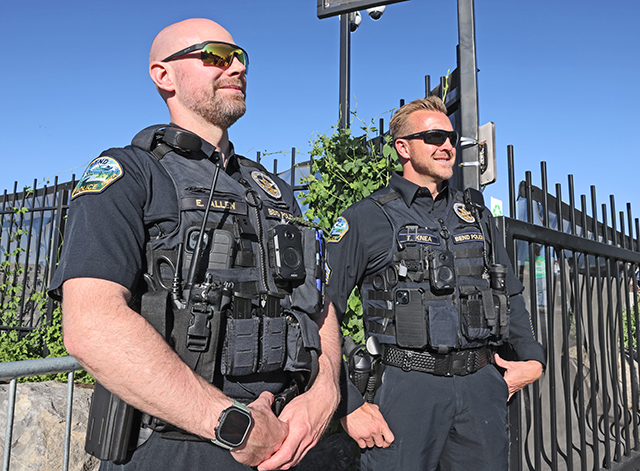Death-row inmates reach out via the Web
Published 5:00 am Monday, July 28, 2008
SAN FRANCISCO — From the steely confines of San Quentin Prison’s death row, scores of California’s most notorious convicts are reaching out to the free world via the Internet.
Scott Peterson’s Web page features smiling photos of himself with his wife, Laci, whom he was found guilty of murdering and dumping into San Francisco Bay while she was pregnant with their son. It also links viewers to his family’s support site, where Peterson has a recent blog posting on his “wrongful conviction.”
Randy Kraft, a condemned Orange County slayer of 16 young men, is looking for pen pals. So is convicted Northern California serial killer Charles Ng, who describes himself as shy and offers to sell his wildlife drawings.
Richard Allen Davis, whose abduction and murder of 12-year-old Polly Klaas helped trigger California’s “three strikes” law, is not selling his hobby crafts but wants correspondents.
“I dug my grave — now I must lay in it,” Davis says of his life.
Indirect access
Prisoners are barred from direct computer access that officials say could allow them to threaten witnesses or orchestrate crimes. Thanks to supporters and commercial services, however, many of the state’s 673 condemned inmates have pen-pal postings and personalized Web pages with writing, artwork and photos of themselves — often accompanied by declarations of innocence and pleas for friendship and funds.
Although some inmates utilize sites in the U.S., the nonprofit Canadian Coalition Against the Death Penalty has created Web pages or pen-pal ads for more than 100 California death-row inmates. The site, unlike some others, is free.
Prisoners’ mail privileges “make it virtually impossible to stop stuff from going out …” said Lt. Eric Messick, litigation coordinator at San Quentin. “That is how things get posted.”
Since the mid-1990s, when a condemned inmate’s column called “Deadman Talkin’” appeared online, use of the Internet by prisoners has proliferated in California and elsewhere.
While civil libertarians applaud the development as the exercise of free speech by isolated people, victims’ rights activists decry it as an unnecessary affront to the loved ones of those whose suffering led society to lock up these prisoners.
“It’s hurtful,” said Christine Ward, director of the Crime Victims Action Alliance. “They are seeing a (convicted) person going on with their life, but the person they raised or married or knew does not get that opportunity. … That murdered person is not coming back.”
Elizabeth Alexander, director of the National Prison Project of the American Civil Liberties Union, said survivors simply should steer clear of Web sites that would be painful to see.
“It does not seem that you can design a limit on the First Amendment based on an expectation that victims will seek out something that gives them more pain,” she said.
Recent laws
After the widow of an Arizona murder victim became outraged by the killer’s online ad, that state’s legislators passed a law banning inmates from the Internet, even through outside contacts. In 2003, a judge declared it unconstitutional.
A year earlier, a judge had barred California prison officials from enforcing a rule prohibiting inmates from receiving materials printed from the Internet — a measure officials said was partly to prevent encoded messages.
Missouri adopted a rule in 2007, similar to one in Florida, prohibiting inmates from soliciting pen pals on the Internet, saying that several had been scamming their new friends. Prison spokesman Brian Hauswirth said many solicitations were misleading, and one female prisoner received $10,000 each from several men who thought she loved them.






